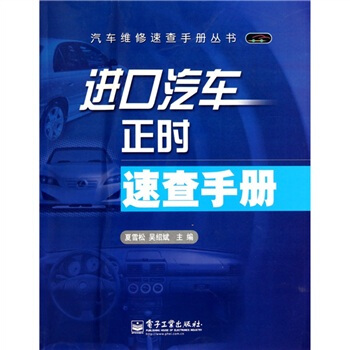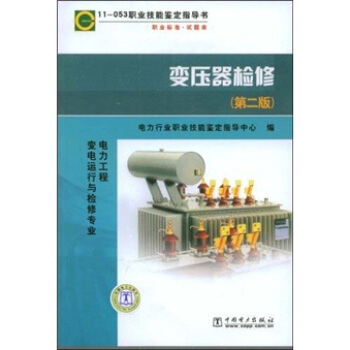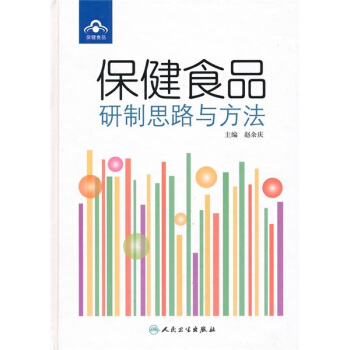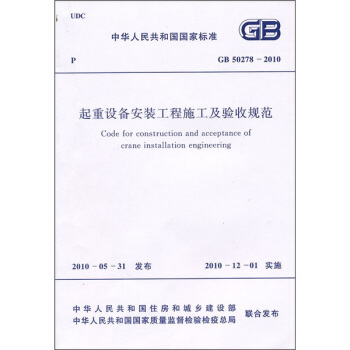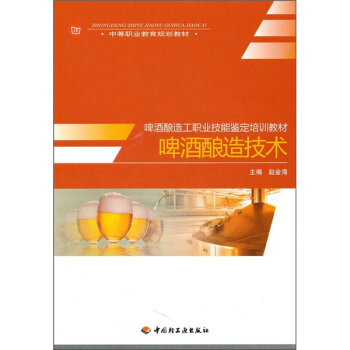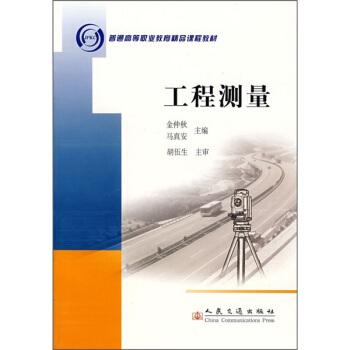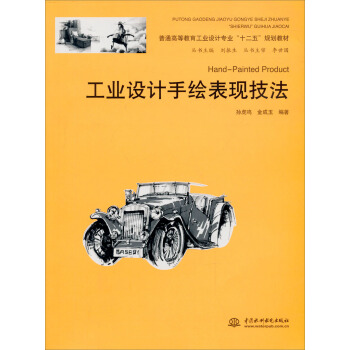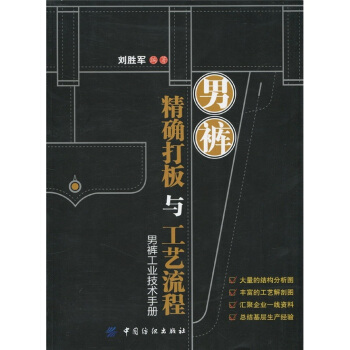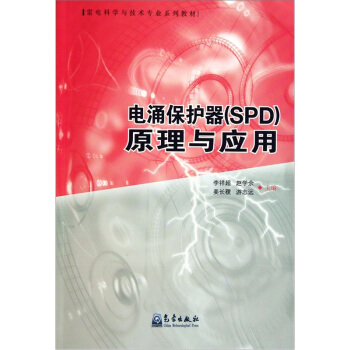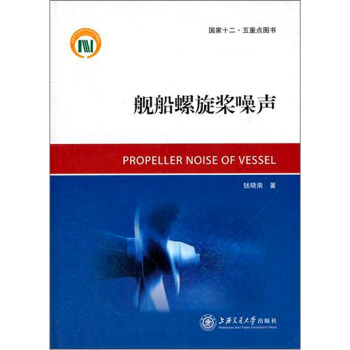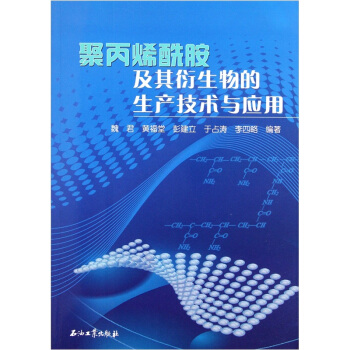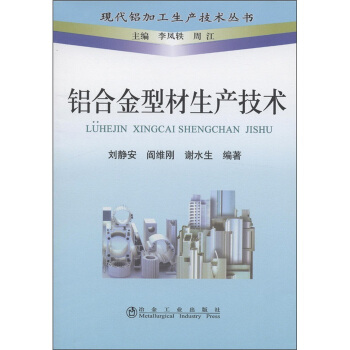

具体描述
内容简介
《制造技术:金属切削与机床(第2卷)(英文版·原书第2版)》是一本适合于我国高校机械工程及自动化以及相关专业的优秀英文原版教材,同时也不失为一本专业的教学参考书。可用于相关专业的专业英语教学,并可供机械工程和制造工程领域的专业技术人员参考。《制造技术:金属切削与机床(第2卷)(英文版·原书第2版) 》侧重机械制造的基本内容,包括涂层硬质合金、机械加工技术、通用测量设备和特种加工技术四大部分。
将原书中第14章“工艺规划”改写为“工装与夹具”
增加了介绍涂层硬质合金的内容。
加强了机床传动系统及作动器方面的内容。
改写了第11章“特种加工”的内容,增加了水切割等新工艺方法。
第15章对摩擦学方面的通用测量设备内容进行了更新。
作者简介
作者:(美国)拉奥(P N Rao)目录
出版说明序
Preface
1. Introduction
1.1 Introduction to Material Removal Processes
1.2 Variety of Machine Tools
2. Metal Cutting
Objectives
2.1 Introduction
2.2 Chip Formation
2.3 Shear Zone
2.4 Orthogonal Cutting
2.5 Shear Angle and Its Relevance
2.6 Cutting Tool Materials
2.7 Thermal Aspects
2.8 Tool Wear and Tool Life
2.9 Surface Finish
2.10 Cutting Fluids
2.11 Empirical and Analytical Determination of Cutting Forces
2.12 Economics
Summary
References
Review Questions
Problems
3. Machine Tools
Objectives
3.1 Introduction
3.2 Classification of Machine Tools
3.3 Generating and Forming
3.4 Methods of Generating Surfaces
3.5 Accuracy and Finish Achievable
3.6 Basic Elements of Machine Tools
3.7 Support Structures
3.8 Power Transmission
3.9 Actuation Systems
3.10 Guideways
3.11 General Work Holding Methods
Summary
References
Questions
4. Centre Lathe
Objectives
4.1 Introduction
4.2 Constructional Features of a Centre Lathe
4.3 Aids for Support and Location
4.4 Cutting Tools
4.5 Operations Performed in a Centre Lathe
4.6 Taper Turning Methods
4.7 Thread-cutting Methods
4.8 Special Attachments
4.9 Machining Time and Power Estimation
4.10 Typical Setups
Summary
References
Questions
Problems
5. Special-Purpose Lathes
Objectives
5.1 Limitations of a Centre Lathe
5.2 Capstan and Turret Lathes
5.3 Automatic Lathes
5.4 Tooling Layout and CAM Design for Automatic Lathes
Summary
Questions
6. Reciprocating Machine Tools
Objectives
6.1 Introduction
6.2 Shaper
6.3 Planing Machine
6.4 Slotter
Summary
Questions
Problems
7. Milling
Objectives
7.1 Introduction
7.2 Types of Milling Machines
7.3 Milling Cutters
7.4 Milling Operations
7.5 Dividing Head
7.6 Milling Mechanics
7.7 Milling Time and Power Estimation
7.8 Special Setups
Summary
Questions
Problems
8. Hole-Making Operations
Objectives
8.1 Introduction
8.2 Drilling
8.3 Reaming
8.4 Boring
8.5 Tapping
8.6 Other Hole-making Operations
Summary
Questions
Problems
9. Abrasive Processes
Objectives
9.1 Introduction
9.2 Grinding Wheel Designation and Selection
9.3 Types of Grinding Machines
9.4 Grinding Process
9.5 Grinding Process Parameters
9.6 Creep Feed Grinding
9.7 Honing
9.8 Lapping
9.9 Other Finishing Processes
Summary
Questions
Problems
10. Other Machine Tools
Objectives
10.1 Sawing
10.2 Broaching
10.3 Gear Cutting
Summary
Questions
11. Unconventional Machining Processes
Objectives
11.1 Need for Unconventional Processes
11.2 Electric Discharge Machining
11.3 Electro-chemical Machining
11.4 Ultrasonic Machining
11.5 Chemical Machining
11.6 Laser Beam Machining
11.7 Abrasive Water Jet Machining
Summary
References
Questions
12. Machine Tool Testing
Objectives
12.1 Introduction
12.2 Measuring Instruments Used for Testing
12.3 Test Procedures
12.4 Acceptance Tests
Summary
13. Designing for Machining
Objectives
13.1 Introduction
13.2 General Guidelines for Design for Machining
13.3 Design for Turning
13.4 Design for Hole Making Operations
Summary
14. Jigs and Fixtures
Objectives
14.1 Introduction
14.2 Functional Surfaces
14.3 Location Principles
14.4 Locating Devices
14.5 Clamping Devices
14.6 Jigs
14.7 Designing a Jig
14.8 Fixtures
Summary
Questions
15. Metrology
Objectives
15.1 Introduction
15.2 Tolerances, Limits and Fits
15.3 Linear Measurement
15.4 Angular Measurement
15.5 Thread Measurement
15.6 Surface Texture
15.7 Gauges and Gauge Design
Summary
Questions
16. Numerical Control of Machine Tools
Objectives
16.1 Introduction
16.2 Numerical Control
16.3 NC Machine Tools
16.4 Part Programming Fundamentals
16.5 Manual Part Programming Methods
16.6 Computer Aided Part Programming
Summary
Questions
Problems
Index
读者信息反馈表
精彩书摘
Types of cutting fluids There are three basic types of cutting fluids used in metal cutting. They are Water based emulsions Pure water is by far the best cutting fluid available because of its highest heat carrying capacity (high specific heat). Besides this, it is cheap and easily available. Its low viscosity makes it flow at high rates through the cutting fluid system and penetrate the cutting zone. However, water corrodes the work material very quickly, particularly at high temperatures prevalent in the cutting zone as well as the machine tool parts on which it is likely to spill.Hence, other materials are added to water to improve its wetting characteristics, rust inhibitors, and any other additives to improve lubrication characteristics. These are also called water soluble oils. The concentrated oil is normally diluted in water to any desired concentration, such as 30 : 1 to 80 : 1. Straight Mineral oils These are the pure mineral oils without any additives. Their main function is lubrication and rust prevention. These are chemically stable and lower in cost. However, their effectiveness as cutting fluids is limited and therefore would be used for light duty application only. Mineral oils with additives (Neat oils) This is by far the largest variety of cutting fluids available commercially. A number of additives have been developed, which when added to the mineral oils would produce the desirable characteristics for the different machining situations. Many difficult to machine situations would be helped by the use of these cutting fluids. These are generally termed as neat oils.
The additives generally improve the load carrying capacity as well as chemical activity. Fatty oils are generally used for adding the load carrying properties. Other class of additives termed as EP (Extreme Pressure) additives are used for more difficult to machine situations. These EP agents come into effect whenever minute highspots on the mating surfaces break through the oil film, and rub together to set up localised high temperature spots. This high temperature causes the EP additives to react with the adjacent metals, and create an anti-welding layer of solid lubricant, precisely where it is required. The layer is continuously broken by the severe rubbing action between the chip and the tool.
EP additives are basically chlorine or sulphur, or a combination of both of them. As a result, the anti- welding compounds formed in the cutting zone are iron chloride and iron sulphide, both of which have very low shear strengths.
……
前言/序言
由美国北依阿华大学(University of Northern lowa)工业技术系P N Rao教授所著的《制造技术第1卷铸造、成形和焊接》(Manufacturing Technology Volume 1 Foundry,Forming and Welding)和《制造技术第2卷金属切削和机床》(Manufacturing Technology Volume 2 Metal Cutting andMachine Tools)已经分别出版到第3版和第2版,它们已经被国外多所大学选为工程类本科学生学习制造技术的专业基础教科书。几年前,作为国外优秀原版教材,机械工业出版社引进出版了该书的前一个版本,国内部分高校已经采用它们作为“工程材料及成形技术”、“机械制造技术基础”或“制造工程基础(包括成形加工和切削加工)”等机械工程及自动化类专业核心课程的教材或主要教学参考书。该书的引进出版和教学应用,对于促进国内机械工程本科教学中更新教材、教学研究和双语教学等工作,产生了积极的重要作用。以使用本教材的教师和学生的反馈信息为基础,最新出版的这两卷书对第1卷的主要内容进行了大幅度地修订,也对第2卷的部分内容进行了调整和补充,从而使全书内容能够尽可能地反映出制造工艺与装备技术的新进展,使各章节内容更加简明和紧凑,从而更加便于教师和学生使用。
第1卷修订后将原来的29章内容重新组织改写为12章,删去了以前章节中一些重复的内容;重新绘制了部分示意图,使之更加清晰和易于学生理解;增加了有关抗拉试验、激光热处理、快速原型等10余处内容,重写了钎焊的全部内容。第2卷修订后各章标题变化不大,只是将原书中第14章“工艺规划”整个一章改写为“工装与夹具”,但在具体内容上,也进行了较大的修改和补充。第2章增加了介绍涂层硬质合金的内容,第3章加强了机床传动系统及作动器方面的内容,改写了第11章“特种加工”的内容,增加了水切割等新工艺方法,第15章对摩擦学方面的通用测量设备内容进行了更新。此外,该书还别开生面地在正文之前增加了“图示预览(Visual Walkthrough)”,将该章主要内容组成,如教学目的、发展历史、图示范例、已解决的问题、小结、思考题和习题等,用图示和文字做了一个概要描述,这将帮助读者更好地利用该书各章节的内容。
通过以上修订、补充和改写,使新版本制造技术的内容更加系统完整,文字更加简洁易读,图例更加清晰明了。
本书不失为一套适用于我国高校机械工程及自动化以及相关专业的优秀英文原版教材和教学参考书,也适用于相关专业的专业英语教材,并可供机械工程和制造工程领域的专业技术人员学习、参考。
用户评价
作为一名对工业自动化和智能制造领域充满好奇心的爱好者,我对于《制造技术:金属切削与机床(第2卷)(英文版·原书第2版)》这本书的期望是,它能够为我揭开那些看似神秘的加工过程的面纱。我总觉得,那些在工厂里高速运转的机床,就像是工业的心脏,它们的每一次精确的运动,都凝结着无数工程师的智慧和汗水。这本书的书名,让我联想到的是那些复杂的切削力分析、刀具几何学、加工精度控制以及各种类型的机床,例如车床、铣床、磨床等等。我希望它能用清晰易懂的语言,深入浅出地介绍金属切削的基本原理,比如切削力是如何产生的,切屑是如何形成的,以及不同的切削方式(如车削、铣削、钻削、镗削)各自的特点和适用范围。此外,对于机床本身,我希望能了解其核心部件的构造和功能,例如主轴系统、进给系统、冷却系统,以及它们是如何协同工作的。我尤其感兴趣的是,书中是否会涉及现代数控(CNC)技术的发展,以及如何通过编程来控制机床实现复杂的加工任务。我渴望通过阅读这本书,能够构建起一个关于金属切削和机床的系统性知识框架,从而更好地理解现代制造业的运作模式,甚至激发我未来在该领域进行深入研究的兴趣。这本书的厚度、页码以及装订方式,虽然不是内容本身,但它们往往能反映出编者对于内容完整性和读者阅读体验的重视程度,这些都是我评估一本技术书籍质量时会考虑的细节。
评分从一名机械设计工程师的角度来看,《制造技术:金属切削与机床(第2卷)(英文版·原书第2版)》这本书所蕴含的知识,直接关系到我所设计的零件能否被高效、精确地制造出来。我希望这本书能够深入剖析不同类型的机床,例如数控铣床、数控车床、加工中心等,详细介绍它们的机械结构、传动方式、控制系统以及各种附件的功能。了解这些,有助于我在设计零件时,充分考虑到加工的可行性和经济性。例如,在设计一个带有复杂曲面的零件时,我需要知道哪些机床能够胜任,以及需要使用什么样的刀具和加工策略。此外,这本书在金属切削方面的论述,我也期望能够得到更深层次的解读。除了基本的切削原理,我更关心的是如何通过优化切削参数来提高加工效率和零件的精度。例如,对于内螺纹的加工,如何选择合适的刀具和进给量,以确保螺纹的精度和光洁度?对于薄壁零件的加工,又有哪些特殊的技巧和注意事项?我希望这本书能提供一些量化的指导,比如给出不同材料、不同加工方式下的参考切削速度、进给量和切深等数据,甚至包含一些经验公式或图表,方便我们快速查阅和应用。一本好的技术书籍,应当是理论与实践紧密结合的,而这本书的书名,恰恰点明了这两个核心要素,这让我对它充满了期待。
评分我对《制造技术:金属切削与机床(第2卷)(英文版·原书第2版)》这本书的期待,在于它能够帮助我理解现代机床的自动化和智能化水平是如何实现的。我希望书中能够深入介绍数控(CNC)系统的基本原理,包括其硬件构成(如控制器、伺服驱动器、电机)和软件功能(如插补、刀补、程序编辑)。我渴望了解如何通过G代码和M代码来控制机床的运动,实现复杂的加工轨迹。此外,我对机床的功能扩展和智能化发展也充满兴趣,例如书中是否会涉及自动换刀系统(ATC)、自动检测装置、在线测量技术,以及更先进的如机器人集成、虚拟仿真等技术。我希望能够理解这些技术是如何协同工作的,以提高生产效率、加工精度和设备利用率。这本书的附录或参考章节,我期待能包含一些实用的表格、图表或标准,例如不同材料的切削性能参数、常用刀具的规格型号、数控编程指令的速查表等,这些都将对我日常工作中进行工艺规划和编程操作提供极大的便利。一本全面的制造技术书籍,应当能够反映出行业的发展趋势,并为读者提供解决实际问题的有效方法。
评分这本《制造技术:金属切削与机床(第2卷)(英文版·原书第2版)》的书名本身就勾勒出了一幅宏大的图景,让人忍不住对其内容产生浓厚的兴趣。作为一名在制造业领域摸爬滚打了多年的工程师,我深知金属切削和机床技术是现代工业的基石。从精密的航空航天零件到日常所需的汽车零部件,再到我们生活中无处不在的消费电子产品,无一不依赖于这些基础制造过程。这本书的英文原版第二版,更是意味着它经过了时间的沉淀和内容的更新,很可能囊括了最新的技术发展和行业实践。我尤其期待它能在理论深度和实践指导之间找到一个完美的平衡点,既能让新手快速入门,又能让有经验的工程师获得启发。这本书的定价和出版日期,虽然在评价内容中不直接提及,但这些信息本身就暗示了它所蕴含的知识价值和潜在的市场认可度。我设想,它或许会深入探讨不同金属材料的切削特性,比如那些难加工合金在高速切削时的变形行为、刀具磨损机理以及如何优化切削参数以提高效率和表面质量。同时,对于机床本身,从传统的通用机床到现代化的数控加工中心,再到更尖端的五轴联动和智能制造装备,书中是否会有详尽的结构分析、工作原理阐述以及维护保养的宝贵经验?这些都是我非常看重的方面。一本好的技术书籍,不仅仅是知识的堆砌,更应该是一种思维方式的引导,一种解决问题的思路启发。它应该能够帮助读者理解“为什么”,而不仅仅是“怎么做”。我期待这本书能够提供这样的深度和广度,让我能够带着问题去阅读,带着收获去实践。
评分作为一个对精益制造和工业4.0概念感兴趣的读者,《制造技术:金属切削与机床(第2卷)(英文版·原书第2版)》这本书的内容,我预期会触及到如何通过先进的制造技术来提升生产效率和产品质量。我希望书中不仅介绍传统的金属切削方法,更会深入探讨一些现代化的加工技术,例如高速切削、精密加工、超精密加工,以及它们在航空航天、模具制造等高端领域的应用。对于机床部分,我期待能够了解到新一代数控机床的技术发展趋势,例如智能化、网络化、柔性化等方面的特点。我希望书中能够阐述如何通过先进的机床和加工技术,实现更小的加工误差,更低的表面粗糙度,以及更长的刀具寿命。另外,如果书中能够涉及到一些关于加工过程监控和优化技术的内容,例如切削力监测、温度监测、刀具磨损在线监测等,那将对我理解智能制造的实现具有重要的意义。我也会关注书中对于绿色制造和节能减排方面的论述,例如如何通过优化切削工艺来降低能耗,减少切削液的使用量,以及如何进行废料的回收和再利用。一本真正与时俱进的技术书籍,应当能够引导读者思考如何将先进的制造技术应用于实际生产,以实现更高的经济效益和更好的社会效益。
评分我对《制造技术:金属切削与机床(第2卷)(英文版·原书第2版)》这本书的期待,更多地集中在其理论的严谨性和实践的指导性上。作为一名在研发部门工作的工程师,我常常需要面对各种新材料、新工艺的挑战,而金属切削和机床技术正是解决这些挑战的关键。我希望这本书能够提供扎实的理论基础,比如关于材料塑性变形的力学模型,切削热的产生与传递,以及刀具磨损的几种主要失效模式。这些理论知识,对于我们理解加工过程中的各种现象,并制定有效的解决方案至关重要。同时,我更看重的是书中的实践指导。它是否会提供不同工况下的切削参数优化方法,不同刀具材料和几何形状的选择原则,以及如何针对特定材料(例如钛合金、高温合金、复合材料)设计切削工艺?我特别希望能看到一些具体的案例分析,展示如何通过合理的切削参数和刀具选择,解决实际生产中遇到的精度不高、表面粗糙度不佳、刀具寿命短等问题。这本书的尺寸和重量,作为一本技术专著,往往意味着它承载了大量的信息和深度,我会期待它能够成为我案头的常备参考书,在遇到技术难题时,能够迅速找到解决方案。它的章节划分是否逻辑清晰,索引是否详尽,这些都会极大地影响我检索信息时的效率。
评分从一名质量工程师的角度出发,《制造技术:金属切削与机床(第2卷)(英文版·原书第2版)》这本书的价值,在于它能帮助我更深入地理解金属切削过程中可能影响产品质量的各种因素,并为质量控制提供理论依据。我期待书中能够详细阐述金属切削过程中的各种误差来源,例如机床本身的几何误差、刀具的磨损误差、工艺系统刚性不足引起的变形误差、热变形误差等,并分析这些误差是如何累积并最终影响到零件的尺寸精度、形位公差和表面质量的。我希望书中能提供一些关于加工质量评估和控制的方法,例如如何通过参数优化来改善表面粗糙度,如何通过调整切削参数来减少振动和提高加工精度,以及如何进行切削过程中的在线质量监控。此外,如果书中能够包含一些关于不同材料的切削加工特性以及它们对产品质量的影响,例如某些材料在切削过程中容易产生涂层积屑瘤,如何通过工艺改进来避免,那将对我更好地理解和解决加工质量问题非常有帮助。一本严谨的质量控制参考书,应当能够提供科学的分析方法和有效的改进策略,帮助我们生产出更高质量的产品。
评分对于一位正在学习机械制造及其自动化的学生来说,《制造技术:金属切削与机床(第2卷)(英文版·原书第2版)》这本书的出现,无疑是一个宝贵的学习资源。我期待它能用一种系统性的方式,为我打下坚实的理论基础。从书名来看,它应该会详细讲解金属切削的基本原理,例如切削过程中的能量转换、切削力的大小及其影响因素、切屑的形成机理等。这些内容对于理解为什么会出现某种加工现象,以及如何解释和控制这些现象至关重要。同时,对于机床的介绍,我也希望能深入了解各种机床的工作原理,比如主轴的结构和精度如何保证,进给系统的精度是如何实现的,以及数控系统的基本构成和操作方法。我尤其希望书中能够包含一些典型的加工实例,通过图文并茂的方式,展示如何根据零件的形状和精度要求,选择合适的机床、刀具和切削工艺。例如,如何加工一个高精度轴承零件,需要用到哪些机床和刀具,以及如何设置加工参数?我相信,通过对这些实际案例的学习,我能够将书本上的理论知识与实际生产紧密联系起来,为未来的学习和工作打下坚实的基础。这本书的语言风格和排版方式,对于学生来说也非常重要,易于理解的语言和清晰的图示,能够极大地提高学习效率。
评分作为一名资深的工具与夹具设计者,我深知金属切削过程中的刀具和夹具设计的重要性,《制造技术:金属切削与机床(第2卷)(英文版·原书第2版)》这本书,我寄希望于它能为我提供更深入的理论指导和更丰富的实践经验。我期待书中能够详细讲解各种切削刀具的结构、材料、几何参数以及它们在不同加工过程中的作用。例如,对于铣刀,我希望能了解到不同齿形、螺旋角、前角、后角对切削性能的影响;对于车刀,我希望能了解到刀尖半径、主偏角、副偏角等参数如何影响切屑的形成和表面质量。在夹具设计方面,我期望书中能够阐述工件定位、夹紧和分度的基本原理,以及各种常用夹具(如三爪卡盘、四爪卡盘、平口钳、万能角度头)的设计要点和应用技巧。我尤其关心的是,书中是否会涉及一些复杂零件的夹具设计案例,例如如何为不规则形状的零件设计稳定可靠的夹具。此外,如果书中能够提供一些关于刀具磨损机理的深入分析,以及如何通过合理的刀具设计和维护来延长刀具寿命,那将对我非常有价值。一本好的工具与夹具设计参考书,应当能够帮助我设计出更高效、更经济、更可靠的刀具和夹具,从而提升整体的加工效率和产品质量。
评分对于一名长期从事工艺规划和生产管理工作的人员来说,《制造技术:金属切削与机床(第2卷)(英文版·原书第2版)》这本书的价值,在于它能够为我提供更全面、更深入的知识,帮助我做出更优化的生产决策。我希望书中能够对各种金属切削方式(如车削、铣削、钻削、磨削)的适用范围、工艺特点、加工精度以及经济性进行详细的比较和分析,以便我能够根据零件的特点和生产要求,选择最合适的加工方法。对于机床的选择,我也期望书中能够提供更详细的指导,例如如何根据零件的尺寸、形状、精度要求和加工批量,来选择合适的机床类型、规格和配置。我特别希望书中能够包含一些关于刀具选择和寿命预测的内容,例如不同刀具材料(如硬质合金、陶瓷、立方氮化硼)的性能特点,不同刀具几何参数对切削过程的影响,以及如何通过合理的刀具选择和维护,来延长刀具寿命,降低生产成本。此外,如果书中能够涉及到一些关于切削加工过程中的质量控制和检测方法,例如表面粗糙度检测、尺寸精度检测、形位公差检测等,那将对我改进生产工艺,提高产品质量非常有帮助。一本实用的技术书籍,应当是能够直接指导生产实践的,而这本书的书名,让我对它充满了这样的期待。
评分这本书挺好的建议购买,尤其对于机械人来说。
评分改写了第11章“特种加工”的内容,增加了水切割等新工艺方法。
评分学学专业英语,本身也是做机床的。
评分改写了第11章“特种加工”的内容,增加了水切割等新工艺方法。
评分打折时买的,可以参考一下
评分很不错的一本书,印刷还可以,纸张质量也还行
评分包装很好的
评分挺好的,挺喜欢,非常值!
评分书真的很不错,就是许久没看英语了,有点费劲
相关图书
本站所有内容均为互联网搜索引擎提供的公开搜索信息,本站不存储任何数据与内容,任何内容与数据均与本站无关,如有需要请联系相关搜索引擎包括但不限于百度,google,bing,sogou 等,本站所有链接都为正版商品购买链接。
© 2026 windowsfront.com All Rights Reserved. 静流书站 版权所有




